HSBC 2004 Annual Report Download - page 351
Download and view the complete annual report
Please find page 351 of the 2004 HSBC annual report below. You can navigate through the pages in the report by either clicking on the pages listed below, or by using the keyword search tool below to find specific information within the annual report.-
 1
1 -
 2
2 -
 3
3 -
 4
4 -
 5
5 -
 6
6 -
 7
7 -
 8
8 -
 9
9 -
 10
10 -
 11
11 -
 12
12 -
 13
13 -
 14
14 -
 15
15 -
 16
16 -
 17
17 -
 18
18 -
 19
19 -
 20
20 -
 21
21 -
 22
22 -
 23
23 -
 24
24 -
 25
25 -
 26
26 -
 27
27 -
 28
28 -
 29
29 -
 30
30 -
 31
31 -
 32
32 -
 33
33 -
 34
34 -
 35
35 -
 36
36 -
 37
37 -
 38
38 -
 39
39 -
 40
40 -
 41
41 -
 42
42 -
 43
43 -
 44
44 -
 45
45 -
 46
46 -
 47
47 -
 48
48 -
 49
49 -
 50
50 -
 51
51 -
 52
52 -
 53
53 -
 54
54 -
 55
55 -
 56
56 -
 57
57 -
 58
58 -
 59
59 -
 60
60 -
 61
61 -
 62
62 -
 63
63 -
 64
64 -
 65
65 -
 66
66 -
 67
67 -
 68
68 -
 69
69 -
 70
70 -
 71
71 -
 72
72 -
 73
73 -
 74
74 -
 75
75 -
 76
76 -
 77
77 -
 78
78 -
 79
79 -
 80
80 -
 81
81 -
 82
82 -
 83
83 -
 84
84 -
 85
85 -
 86
86 -
 87
87 -
 88
88 -
 89
89 -
 90
90 -
 91
91 -
 92
92 -
 93
93 -
 94
94 -
 95
95 -
 96
96 -
 97
97 -
 98
98 -
 99
99 -
 100
100 -
 101
101 -
 102
102 -
 103
103 -
 104
104 -
 105
105 -
 106
106 -
 107
107 -
 108
108 -
 109
109 -
 110
110 -
 111
111 -
 112
112 -
 113
113 -
 114
114 -
 115
115 -
 116
116 -
 117
117 -
 118
118 -
 119
119 -
 120
120 -
 121
121 -
 122
122 -
 123
123 -
 124
124 -
 125
125 -
 126
126 -
 127
127 -
 128
128 -
 129
129 -
 130
130 -
 131
131 -
 132
132 -
 133
133 -
 134
134 -
 135
135 -
 136
136 -
 137
137 -
 138
138 -
 139
139 -
 140
140 -
 141
141 -
 142
142 -
 143
143 -
 144
144 -
 145
145 -
 146
146 -
 147
147 -
 148
148 -
 149
149 -
 150
150 -
 151
151 -
 152
152 -
 153
153 -
 154
154 -
 155
155 -
 156
156 -
 157
157 -
 158
158 -
 159
159 -
 160
160 -
 161
161 -
 162
162 -
 163
163 -
 164
164 -
 165
165 -
 166
166 -
 167
167 -
 168
168 -
 169
169 -
 170
170 -
 171
171 -
 172
172 -
 173
173 -
 174
174 -
 175
175 -
 176
176 -
 177
177 -
 178
178 -
 179
179 -
 180
180 -
 181
181 -
 182
182 -
 183
183 -
 184
184 -
 185
185 -
 186
186 -
 187
187 -
 188
188 -
 189
189 -
 190
190 -
 191
191 -
 192
192 -
 193
193 -
 194
194 -
 195
195 -
 196
196 -
 197
197 -
 198
198 -
 199
199 -
 200
200 -
 201
201 -
 202
202 -
 203
203 -
 204
204 -
 205
205 -
 206
206 -
 207
207 -
 208
208 -
 209
209 -
 210
210 -
 211
211 -
 212
212 -
 213
213 -
 214
214 -
 215
215 -
 216
216 -
 217
217 -
 218
218 -
 219
219 -
 220
220 -
 221
221 -
 222
222 -
 223
223 -
 224
224 -
 225
225 -
 226
226 -
 227
227 -
 228
228 -
 229
229 -
 230
230 -
 231
231 -
 232
232 -
 233
233 -
 234
234 -
 235
235 -
 236
236 -
 237
237 -
 238
238 -
 239
239 -
 240
240 -
 241
241 -
 242
242 -
 243
243 -
 244
244 -
 245
245 -
 246
246 -
 247
247 -
 248
248 -
 249
249 -
 250
250 -
 251
251 -
 252
252 -
 253
253 -
 254
254 -
 255
255 -
 256
256 -
 257
257 -
 258
258 -
 259
259 -
 260
260 -
 261
261 -
 262
262 -
 263
263 -
 264
264 -
 265
265 -
 266
266 -
 267
267 -
 268
268 -
 269
269 -
 270
270 -
 271
271 -
 272
272 -
 273
273 -
 274
274 -
 275
275 -
 276
276 -
 277
277 -
 278
278 -
 279
279 -
 280
280 -
 281
281 -
 282
282 -
 283
283 -
 284
284 -
 285
285 -
 286
286 -
 287
287 -
 288
288 -
 289
289 -
 290
290 -
 291
291 -
 292
292 -
 293
293 -
 294
294 -
 295
295 -
 296
296 -
 297
297 -
 298
298 -
 299
299 -
 300
300 -
 301
301 -
 302
302 -
 303
303 -
 304
304 -
 305
305 -
 306
306 -
 307
307 -
 308
308 -
 309
309 -
 310
310 -
 311
311 -
 312
312 -
 313
313 -
 314
314 -
 315
315 -
 316
316 -
 317
317 -
 318
318 -
 319
319 -
 320
320 -
 321
321 -
 322
322 -
 323
323 -
 324
324 -
 325
325 -
 326
326 -
 327
327 -
 328
328 -
 329
329 -
 330
330 -
 331
331 -
 332
332 -
 333
333 -
 334
334 -
 335
335 -
 336
336 -
 337
337 -
 338
338 -
 339
339 -
 340
340 -
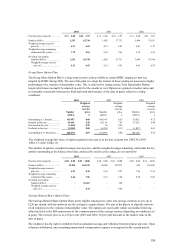 341
341 -
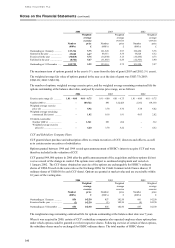 342
342 -
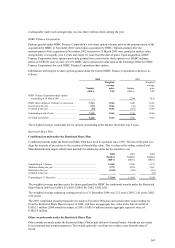 343
343 -
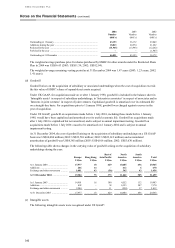 344
344 -
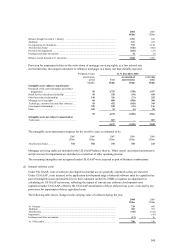 345
345 -
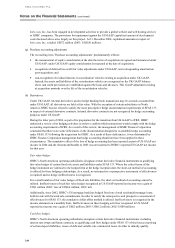 346
346 -
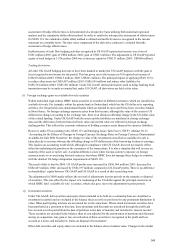 347
347 -
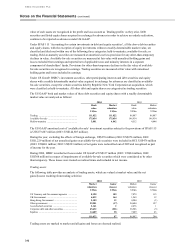 348
348 -
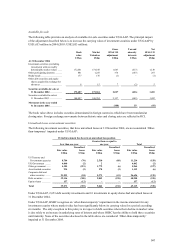 349
349 -
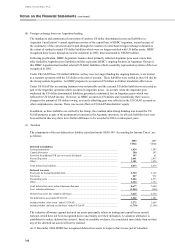 350
350 -
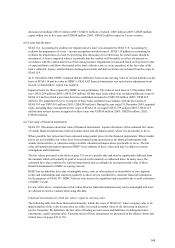 351
351 -
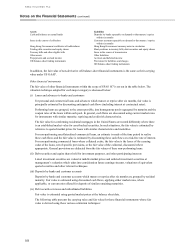 352
352 -
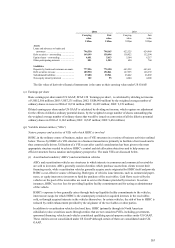 353
353 -
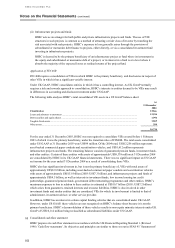 354
354 -
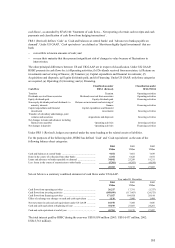 355
355 -
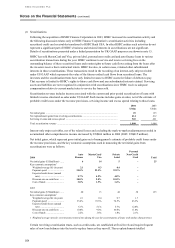 356
356 -
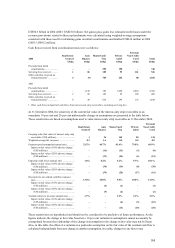 357
357 -
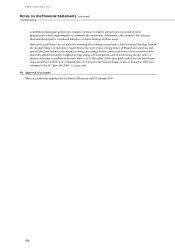 358
358 -
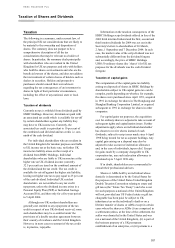 359
359 -
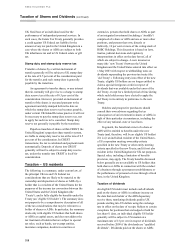 360
360 -
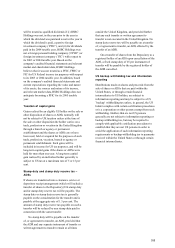 361
361 -
 362
362 -
 363
363 -
 364
364 -
 365
365 -
 366
366 -
 367
367 -
 368
368 -
 369
369 -
 370
370 -
 371
371 -
 372
372 -
 373
373 -
 374
374 -
 375
375 -
 376
376 -
 377
377 -
 378
378
 |
 |
349
allowances) totalling US$115 million (2003: US$231 million), of which, US$7 million (2003: US$49 million)
expire within two to five years and US$108 million (2003: US$182 million) expire in 5 years or more.
(m) Loans and advances
SFAS 114 ‘Accounting by creditors for impairment of a loan’ was amended by SFAS 118 ‘Accounting by
creditors for impairment of a loan – income recognition and disclosures’ . SFAS 114 addresses accounting by
creditors for impairment of a loan by specifying how allowances for credit losses for certain loans should be
determined. A loan is impaired when it is probable that the creditor will be unable to collect all amounts in
accordance with the contractual terms of the loan agreement. Impairment is measured based on the present value
of expected future cash flows discounted at the loan’ s effective rate or, as an expedient, at the fair value of the
loan’ s collateral. Leases, smaller-balance homogeneous loans and debt securities are excluded from the scope of
SFAS 114.
At 31 December 2004, HSBC estimated that the difference between the carrying value of its loan portfolio on the
basis of SFAS 114 and its value in HSBC’ s UK GAAP financial statements was such that no adjustment to net
income or shareholders’ equity was required.
Impaired loans are those reported by HSBC as non-performing. The value of such loans at 31 December 2004
was US$13,284 million (2003: US$15,074 million). Of this total, loans which were included within the scope of
SFAS 114 and for which a provision has been established amounted to US$6,780 million (2003: US$8,810
million). The impairment reserve in respect of these loans estimated in accordance with the provisions of
SFAS 114 was US$3,981 million (2003: US$4,709 million). During the year ended 31 December 2004, impaired
loans, including those excluded from the scope of SFAS 114, averaged US$13,739 million (2003: US$12,215
million) and interest income recognised on these loans was US$184 million (2003: US$230 million; 2002:
US$258 million).
(n) Fair value of financial instruments
SFAS 107 ‘Disclosures about fair value of financial instruments’ requires disclosure of the estimated fair values
of certain financial instruments, both on-balance-sheet and off-balance-sheet, where it is practicable to do so.
Where possible, fair values have been estimated using market prices for the financial instruments. Where market
prices are not available, fair values have been estimated using quoted prices for financial instruments with
similar characteristics, or otherwise using a suitable valuation technique where practicable to do so. The fair
value information presented represents HSBC’ s best estimate of these values and may be subject to certain
assumptions and limitations.
The fair values presented in the table on page 351 are at a specific date and may be significantly different from
the amounts which will actually be paid or received on the maturity or settlement dates. In many cases, the
estimated fair values could not be realised immediately and accordingly do not represent the value of these
financial instruments to HSBC as a going concern.
HSBC has excluded the fair value of intangible assets, such as values placed on its portfolio of core deposits,
credit card relationships and customer goodwill, as these are not considered to constitute financial instruments
for the purposes of SFAS 107. HSBC believes such items to be significant and essential to the overall evaluation
of HSBC’ s worth.
In view of the above, comparisons of fair values between financial institutions may not be meaningful and users
are advised to exercise caution when using this data.
Financial instruments for which fair value is equal to carrying value
The following table lists those financial instruments, within the scope of SFAS 107, where carrying value is an
approximation of fair value because they are either (i) carried at market value or (ii) short term in nature or
reprice frequently. By definition, the fair value of trading account assets and liabilities, including derivative
instruments, equals carrying value. Carrying values of these instruments are presented on the balance sheets and
related notes on pages 238 to 356.
